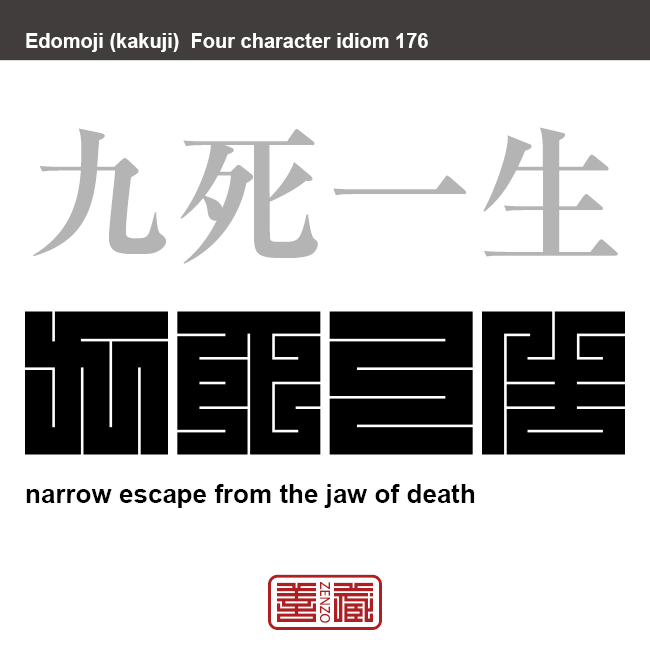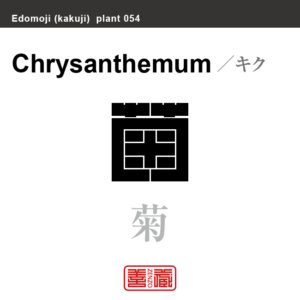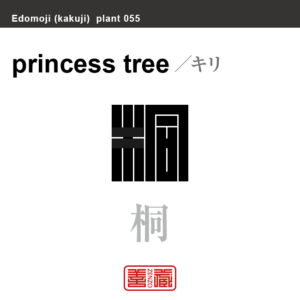九死一生 きゅうしいっしょう 角字でことわざ、四字熟語

九死一生
きゅうしいっしょう
Kyushi-Issyou
narrow escape from the jaw of death
Unicode: [九_0x4E5D][死_0x6B7B][一_0x4E00][生_0x751F]
ほとんど死を免れない危険な状況で、かろうじて助かること。「九死に一生を得る」
「九死」は十のうち九まで死の可能性が高いことで、ほとんど死が避けがたい危険な場合のこと。
角字とは?
江戸時代に誕生した角字は、正方形のグリッド内にほぼ水平・垂直のラインのみで文字(漢字)が表現されるグラフィックアートです。
正方形という限られた空間の中に、あらゆる文字を閉じ込めようとするグラフィックデザインは、前述した、ミニマムな物に対する日本人特有のこだわりが随所に感じられます。
そのシンプルで有りながら、奥深い「角字」は多くの日本人を魅了し、お祭りで着る半被や印半纏(しるしばんてん)と言われる着物や、商標、印鑑、家紋、看板デザインなどに今日まで数多く使用されてきました。
What is Kakuji?
There is a style of penmanship called “Kakuji” in Japan. Edo-born Kakuji is a graphicart that expresses letters (kanji) with almost horizontal and vertical lines only.
The design which bases on many straight lines seems simple, or too plain even at its first glance; yet this beautiful artistic penmanship that encompasses the aesthetic of the Japanese in the Edo era, also known as “Iki”, and playfulness has long been inherited to this day, thanks to the masteries’ long years of efforts in training and refinement.
Kakuji with its simplicity and depth is used for designs such as trademark, hanko stamp, family crest and signboard.































































 2文字コード:MZ 3文字コード:MOZ 数字:508 ITU:258 ccTLD:.mz
2文字コード:MZ 3文字コード:MOZ 数字:508 ITU:258 ccTLD:.mz







































































































































